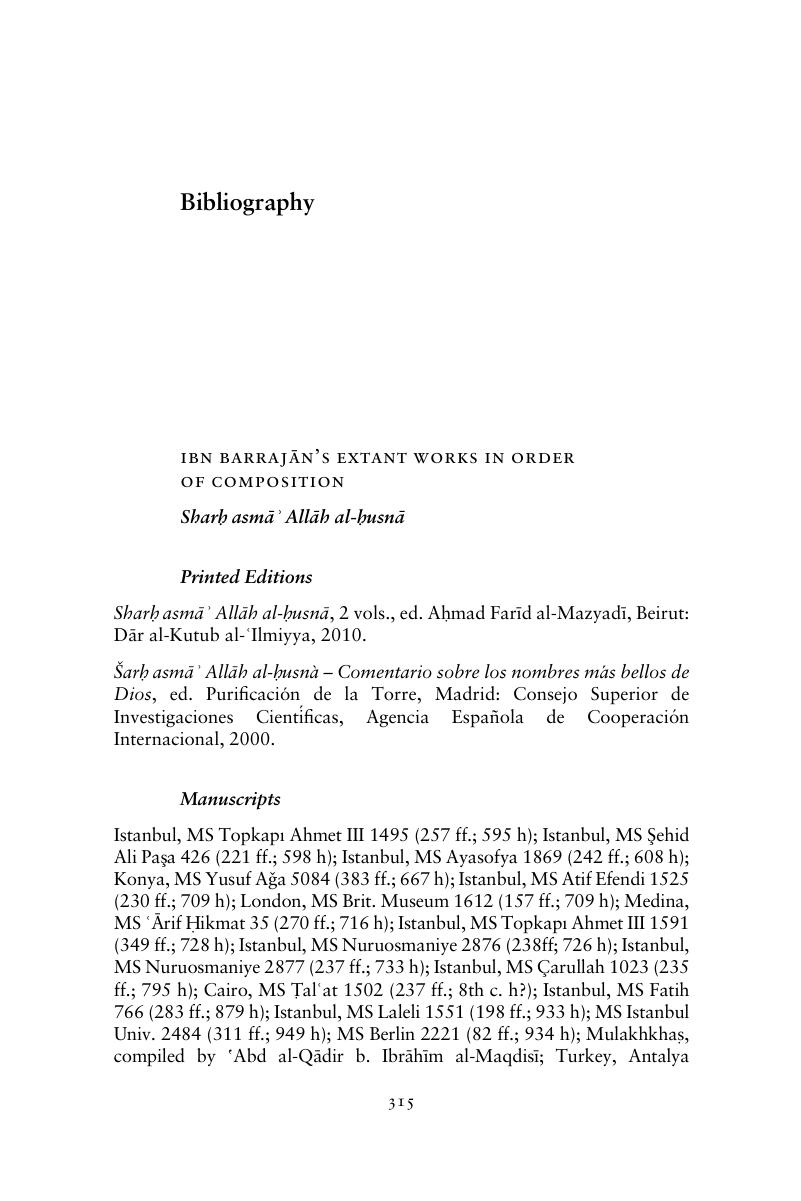Book contents
- The Mystics of al-Andalus
- Cambridge Studies in Islamic Civilization
- The Mystics of al-Andalus
- Copyright page
- Dedication
- Contents
- Acknowledgments
- Notes on the Text
- Abbreviations
- Introduction
- 1 The Beginnings of a Mystical Discourse in al-Andalus
- 2 The Rise of the Andalusī Muʿtabirūn
- 3 The Life of a Contemplative
- 4 The Works of Ibn Barrajān
- 5 The Divine Descent
- 6 The Hermeneutics of Certainty
- 7 A Muslim Scholar of the Bible
- 8 The Human Ascent
- Conclusion
- Bibliography
- Index of Names
- Index of Terms
- Other titles in the series
- References
Bibliography
Published online by Cambridge University Press: 11 May 2017
- The Mystics of al-Andalus
- Cambridge Studies in Islamic Civilization
- The Mystics of al-Andalus
- Copyright page
- Dedication
- Contents
- Acknowledgments
- Notes on the Text
- Abbreviations
- Introduction
- 1 The Beginnings of a Mystical Discourse in al-Andalus
- 2 The Rise of the Andalusī Muʿtabirūn
- 3 The Life of a Contemplative
- 4 The Works of Ibn Barrajān
- 5 The Divine Descent
- 6 The Hermeneutics of Certainty
- 7 A Muslim Scholar of the Bible
- 8 The Human Ascent
- Conclusion
- Bibliography
- Index of Names
- Index of Terms
- Other titles in the series
- References
Summary

- Type
- Chapter
- Information
- The Mystics of al-AndalusIbn Barrajān and Islamic Thought in the Twelfth Century, pp. 315 - 345Publisher: Cambridge University PressPrint publication year: 2017

